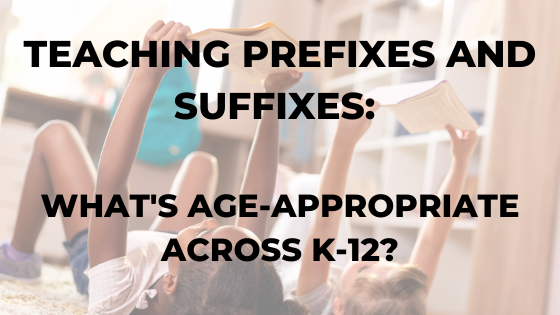I routinely get questions from speech-language pathologists about what’s “age-appropriate” when it comes to vocabulary, semantic, or morphological skills.
The other day, an SLP asked me about how to determine which prefixes and suffixes to target in language therapy when working on morphological awareness skills.
That’s why I wanted to hop on a quick video and share:
👉How speech-language pathologists can determine which affixes to target in language therapy.
👉Why it’s so hard to figure out what vocabulary skills are age-appropriate across grade levels.
👉How to get started with morphological awareness in language therapy, and how to determine which affixes to address first.
👉How to make sure your morphological awareness instruction is tailored to your students’ needs AND aligned with the curriculum at the same time.
Check out this video to learn how to do it:
Building morphological awareness skills can be such a huge part of what we do as SLPs when it comes to delivering effective language therapy.
In truth, knowing how to do this well can give you a lot of clarity when it comes to knowing your role in language and literacy.
You probably know that strong language skills are essential to your students’ success in school and life.
Building spelling skills can have a huge impact on overall language processing and vocabulary growth, which falls perfectly in line with your expertise.
Vocabulary is one of the biggest predictors of success or failure in school because of it’s impact on overall comprehension and language processing (Nagy & Scott, 2009; Nippold, 2017).
But most people aren’t sure how to address spelling issues in therapy because most of the spelling practices done in schools today are confusing our students even more!
Like writing lists of words over and over again to “practice” spelling.
Or randomly shortened spelling lists and memorizing sight words.
You’ve probably already realized these rote drills don’t work for your students.
But there’s good news.
You can make a massive impact on your students’ spelling, reading, and overall comprehension skills when you focus on the underlying language skills causing the problem in the first place.
And one of the most effective ways to build vocabulary that impacts SPELLING and READING at the same time?
By studying MORPHOLOGY and ORTHOGRAPHY.
That’s why I’ve created the Word Study Toolkit for SLPs, an evidence-based, easy-to-use resource bundle that will dramatically increase the language skills your students need to successfully read and spell.
Inside, you’ll get:
👉OVER 200 FLASHCARDS with prefixes, root/base words, suffixes, and multiple meaning words to build strong reading and spelling skills.
👉WORD LISTS with key orthographic concepts, so you have a quick guide to important word parts needed for strong vocabulary skills.
👉DESCRIPTIONS OF 17 KEY CONCEPTS to simply the process of building morphology/orthography skills.
If you have students ranging from early elementary all the way up through late secondary school who struggle with spelling, working on morphological awareness by addressing affix knowldge can have a massive impact!
But I know you don’t have time to go digging for lists of prefixes, suffixes, roots/bases, and multiple meaning words.
So I’ve done the grunt-work for you and put them in to this toolkit just for you.
You can grab your copy of the Word Study Toolkit for SLPs here.

